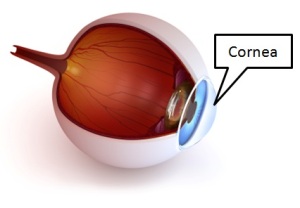Current Trends in the Fashion and Design of Eyeglass Frames
While eyewear’s primary function is to provide clear vision to help people see the world, the fashion element of eyeglasses cannot be overlooked. The design and style of a person’s eyeglass frames says a lot about who that person is and how they want the world to see them.
Match Eyewear is a leading international manufacturer of superior quality eyewear. The company has developed popular brands of eyewear collections with style, diversity and craftsmanship.
Here are the current trends in eyeglass frame fashion and design that Match Eyewear is seeing today.
Large Styles
After years of shrinking eyewear, the pendulum is beginning to swing in the other direction. Though it began in sun wear, the trend is now prevalent in ophthalmic frames. Cosmetically, larger frames display the entire eye area, including the eyebrows, so eyes are naturally emphasized. Design possibilities are nearly limitless with the additional area large frames provide. Functionally, wearers find that the fuller field of view that larger frames provide offers much less distraction and obstructed vision. Examples of this trend are the 4188 from Helium Paris and the 1106 from Adrienne Vittadini.
Being a Geek is Cool!
Geek Chic is a style in eyeglass frames making the scene everywhere including red carpet events and fashion runways, proving all over again that it will always be hip to be square. This is particularly true for ophthalmic frames. DG13 and DG16 from Danny Gokey Eyewear offer a retro take on the trend with shape, but keep the styling current with modern textures and colors.
DG13 Danny Gokey Eyewear
DG16 Danny Gokey Eyewear
Vivid Colors for Men
Distinct colors are all over the fashion runways for Spring and men’s eyewear is no exception. Many collections this year include splashes of color like the pop of blue on 4141 from Helium Paris.
4141 Helium Paris
Elegant Embellishment
True luxury doesn’t lie merely in the cachet of a brand name. For eyewear, luxury means creative and innovative design, superior craftsmanship, premium components and exquisite embellishments. Meticulous and elegant details like the intricately sculpted temples and Swarovski crystal accents on 1048 and 1094 from Adrienne Vittadini are perfect examples of the collection’s refined sophistication. 4207 from Helium Paris takes luxury to a new, bold level with a sleek metal logo emblem encased in Swarovski crystals at the temple.
1048 Adrienne Vittadini
1094 Adrienne Vittadini
4207 Helium Paris
To learn more about eyeglass frame designs and fashions that match your personal style and compliment your appearance, please visit www.shawneeoptical.com.
Shawnee Optical’s team of eye care professionals has been providing customers with a superior level of quality and friendly service for more than 35 years!

































Recent Comments